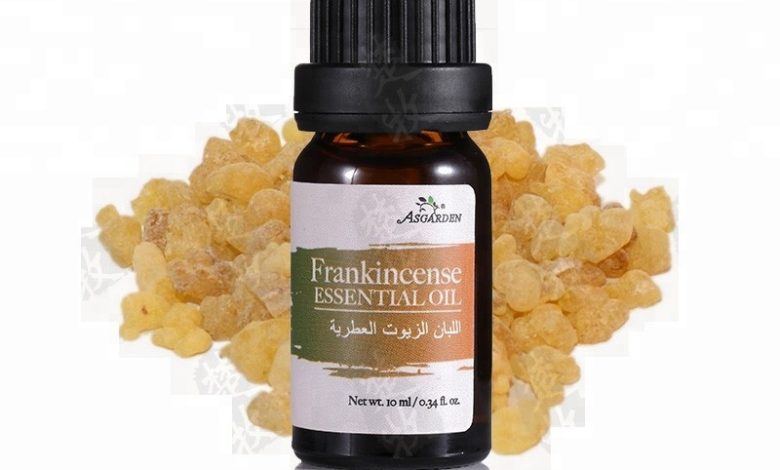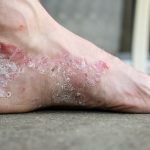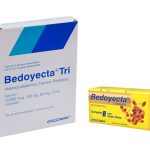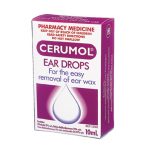Frankincense Oil: Uses, Benefits, How to use, Side Effects, Dangers

Frankincense oil is an essential oil derived from the resin of the Boswellia tree. It has been used for thousands of years in traditional medicine and religious ceremonies. The oil is extracted from the resin by steam distillation.
Frankincense oil is known for its powerful anti-inflammatory properties, and it has been used to treat a wide variety of conditions, including arthritis, asthma, and skin conditions. It is also believed to have a calming effect on the mind and can be used to reduce stress and anxiety.
In aromatherapy, frankincense oil is used to promote feelings of relaxation, calmness, and spiritual awareness. It is often used in meditation practices to help focus the mind and enhance spiritual experiences.
Frankincense oil can be applied topically, inhaled, or diffused in a room. It is important to dilute the oil before using it topically, as it can be quite strong and may cause skin irritation.
History
The use of frankincense dates back thousands of years to ancient civilizations such as the Egyptians, Babylonians, and Assyrians. It was highly valued for its use in religious and medicinal purposes, and it was even considered more valuable than gold.
Frankincense was a key component in the embalming process in ancient Egypt, and it was also used in cosmetics, perfumes, and as a fumigant to purify the air. The Babylonians and Assyrians burned frankincense as incense during religious ceremonies and believed it had spiritual properties that could connect them with the gods.
In the Bible, frankincense is mentioned several times as a gift given to Jesus by the Magi, and it was used in the Temple of Jerusalem during religious ceremonies.
In traditional medicine, frankincense has been used to treat a wide variety of conditions, including respiratory infections, digestive issues, and skin conditions. It was also used to promote relaxation and reduce stress.
Today, frankincense oil is still used in religious ceremonies and is highly valued for its therapeutic properties. It is commonly used in aromatherapy, skincare products, and as an ingredient in natural remedies.
Frankincense oil benefits
Frankincense oil has a wide range of potential health benefits. Some of the most well-known benefits of frankincense oil include:
1. Anti-inflammatory properties: Frankincense oil contains compounds that have been shown to reduce inflammation, making it a potential treatment for conditions such as arthritis and asthma.
2. Antimicrobial properties: The oil has been shown to have antibacterial and antifungal properties, making it a potential treatment for infections.
3. Skin health: Frankincense oil is believed to have skin-healing properties and can be used to treat conditions such as acne, eczema, and psoriasis.
4. Immune system support: Frankincense oil may help boost the immune system by promoting the production of white blood cells.
5. Stress relief: The oil has a calming effect on the mind and may help reduce feelings of stress and anxiety.
6. Respiratory health: Frankincense oil may help improve respiratory function and can be used to treat conditions such as bronchitis and asthma.
7. Digestive health: The oil has been used to treat digestive issues such as bloating, constipation, and indigestion.
It is important to note that while frankincense oil has many potential benefits, more research is needed to fully understand its effects on the body. As with any essential oil, it is important to use it safely and consult with a healthcare professional before use.
Dosage
The appropriate dosage of frankincense oil can vary depending on factors such as age, health status, and the reason for use. It is important to follow the instructions on the product label and consult with a healthcare professional before using frankincense oil.
For aromatherapy use, a few drops of frankincense oil can be added to a diffuser or a bowl of hot water for inhalation. It is important to avoid direct skin contact with undiluted frankincense oil, as it can cause skin irritation. For topical use, frankincense oil should be diluted with a carrier oil such as coconut oil or jojoba oil before applying to the skin.
The appropriate dosage for internal use of frankincense oil has not been established, and it is not recommended to consume frankincense oil without the guidance of a healthcare professional. Ingesting undiluted essential oils can be dangerous and should be avoided.
How To Use Frankincense Oil On Face
Frankincense oil is a versatile and beneficial essential oil that can be used in many ways, including on the face. Here are some steps on how to use frankincense oil on the face:
1. Dilute the frankincense oil: Essential oils are highly concentrated and should always be diluted before use. You can dilute frankincense oil with a carrier oil such as jojoba oil or coconut oil. A good rule of thumb is to use 1-2 drops of frankincense oil per teaspoon of carrier oil.
2. Cleanse your face: Start with a clean and dry face. Use a gentle cleanser to remove any dirt, makeup, or impurities.
3. Apply the frankincense oil: Take a small amount of the diluted frankincense oil on your fingertips and apply it to your face, focusing on areas that need extra attention. Avoid getting the oil in your eyes.
4. Massage the oil into your skin: Use your fingertips to massage the oil into your skin in circular motions. This helps to increase circulation and promote absorption.
5. Allow the oil to absorb: Leave the oil on your skin for a few minutes to allow it to absorb fully.
6. Moisturize: After the oil has been absorbed, you can apply your regular moisturizer if needed.
Tips:
• Start with a small amount of frankincense oil and see how your skin reacts. If you experience any irritation, stop using it immediately.
• Frankincense oil can also be added to your regular moisturizer or serum.
• It’s best to use frankincense oil at night as it can make your skin more sensitive to sunlight.
• Patch test before using it for the first time. Apply a small amount of diluted oil to the inside of your elbow and wait 24 hours to see if you have any adverse reactions.
How To Use Frankincense Oil For Pain
Here are some ways to use frankincense oil for pain:
1. Topical application: Dilute the frankincense oil with a carrier oil, such as coconut oil or jojoba oil. Mix a few drops of frankincense oil with a tablespoon of carrier oil and apply it to the affected area. Massage gently for a few minutes to allow the oil to penetrate the skin.
2. Inhalation: Add a few drops of frankincense oil to a diffuser or a bowl of hot water. Inhale the steam to help relieve pain and inflammation.
3. Bath soak: Add a few drops of frankincense oil to a warm bath and soak for at least 20 minutes. The warm water and the essential oil will help relax your muscles and ease pain.
4. Compress: Add a few drops of frankincense oil to a bowl of warm water. Soak a clean cloth in the water and wring out the excess. Apply the damp cloth to the affected area for a few minutes to help reduce pain and swelling.
Remember to always dilute the frankincense oil before using it on your skin, as it can cause irritation if used in its concentrated form. It’s also important to patch test before using it for the first time to ensure you’re not allergic to it. If you experience any adverse reactions, stop using the oil immediately.
Side Effects
Frankincense oil is generally considered safe for most people when used properly. However, there are some potential side effects that can occur with its use:
- Skin irritation: Frankincense oil can be irritating to the skin if used undiluted or if applied in high concentrations.
- Allergic reactions: Some people may be allergic to frankincense oil, which can cause symptoms such as itching, swelling, and difficulty breathing.
- Gastrointestinal issues: Ingesting frankincense oil may cause stomach upset, nausea, or diarrhea.
- Drug interactions: Frankincense oil may interact with certain medications, including blood-thinning medications and anti-inflammatory drugs.
It is important to use frankincense oil safely and consult with a healthcare professional before use, especially if you are pregnant, nursing, have a medical condition, or are taking any medications. It is also important to purchase high-quality, pure essential oils from a reputable source and to follow proper dilution guidelines.
Interactions
Frankincense oil may interact with certain medications. Here are some examples:
Blood-thinning medications: Frankincense oil may have blood-thinning properties, so it should be used with caution if you are taking medications such as warfarin or aspirin.
Anti-inflammatory medications: Frankincense oil may have anti-inflammatory properties, so it should be used with caution if you are taking medications such as corticosteroids or nonsteroidal anti-inflammatory drugs (NSAIDs).
Chemotherapy drugs: Some research suggests that frankincense oil may enhance the effects of certain chemotherapy drugs, so it should be used with caution if you are undergoing chemotherapy.
Sedatives: Frankincense oil may have sedative properties, so it should be used with caution if you are taking medications such as benzodiazepines or barbiturates.
It is important to consult with a healthcare professional before using frankincense oil if you are taking any medications. They can advise you on whether frankincense oil is safe to use and how it may interact with your medications.
Storage
Proper storage is important to maintain the quality and effectiveness of frankincense oil. Here are some tips for storing frankincense oil:
- Store in a cool, dry place: Essential oils should be stored away from heat, light, and moisture. Keep the bottle tightly sealed and store it in a cool, dry place, such as a cupboard or drawer.
- Use dark-colored bottles: Essential oils should be stored in dark-colored glass bottles to protect them from light. Clear glass bottles can allow light to penetrate, which can degrade the oil.
- Keep out of reach of children: Essential oils should be kept out of the reach of children and pets. They can be toxic if ingested or applied improperly.
- Check the expiration date: Essential oils can lose their potency over time. Check the expiration date on the bottle and replace the oil if it has expired.
- Do not store in plastic containers: Essential oils can react with plastic and break down the container, leading to contamination of the oil. Use glass or stainless steel containers to store essential oils.
By following these storage tips, you can help ensure that your frankincense oil remains fresh and effective for as long as possible.





